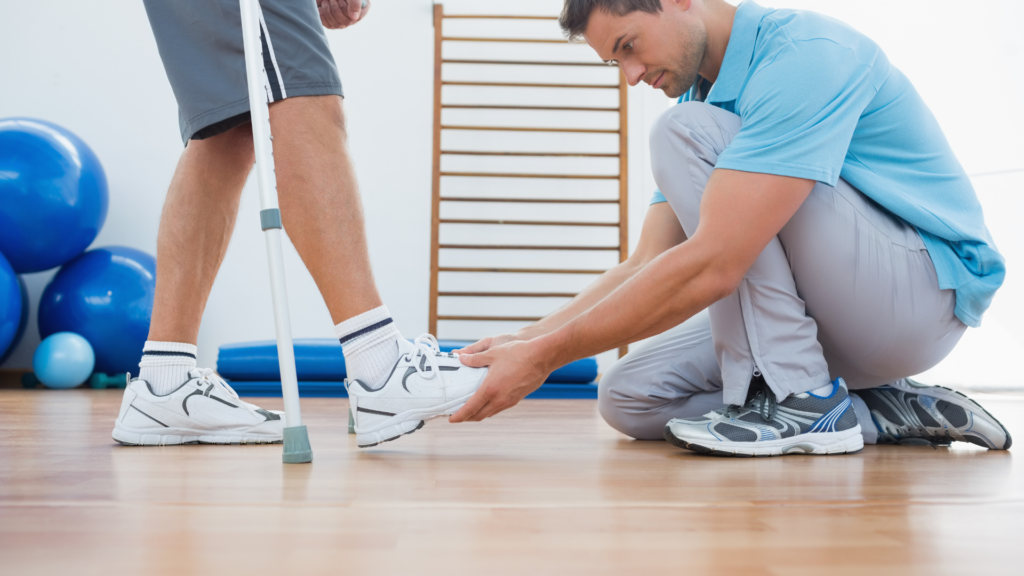One of the most frequently asked questions patients have when considering their treatment options is, how long does it take to walk after hip surgery? Broadly speaking, there has been a move to get people up and mobile as soon as possible following orthopaedic surgery.
This has many benefits including shorter hospital stays, regaining independence, improved outcomes as well as reducing the risk of blood clots in the legs (deep vein thrombosis (DVT)) and lungs (pulmonary embolism (PE)). Each surgical procedure and patient is different and therefore it is important to tailor recovery accordingly with your surgeon and/or therapist.
How soon can you walk after anterior hip replacement?
Hip replacement surgery is one of the most successful operations available and continues to improve. However, it is a major operation that carries significant risks that should be carefully considered along side the benefits.
One the greatest achievements in hip replacement surgery over the past decade has not been a change in technique, but a change in the anaesthetic techniques and rehabilitation protocols. People are now encouraged to get up and walk with the use of a walking frame, crutches or sticks within hours of their hip replacement surgery. Some people are now able to go home on the same day of surgery. This applies to hips that are replaced via the anterior and posterior approaches. So the answer to the question ‘how soon can you walk after anterior hip replacement?’ is the same as ‘how soon can you walk after a posterior approach hip replacement?’, you can be up walking the same day as the surgery.


How long to walk after broken hip surgery?
A broken hip is a significant injury and in older people is a sign that their bones may be weak. The aim of surgery for a broken hip, is to get the person up and out of bed as quickly as possible as the risks to a person’s health due to reduced mobility are significant. Therefore, once a person has had surgery for their broken hip the focus should turn to their rehabilitation. Similar to hip replacement surgery, people following broken hip surgery are encouraged to get up on the same day of their operation. This can be affected by other medical conditions that may need to be treated as well.
Walking after hip fracture surgery?
Walking after hip fracture surgery should be encouraged. Comfort and common sense is always a good guide to follow. Physiotherapists and occupational therapists can assist in getting someone back on their fit and independent as quickly as possible. If someone breaks their hip, it is essential that they are also seen by a specialist in managing the medical aspects of their health including bone density. These specialists are referred to as orthogeriatricans.
Suggest our doctor for hip surgery
Mr Webb is trained in both anterior and posterior approaches for hip replacements using the latest imaging software to help minimise risk and optimise outcomes. His experience working in one of the busiest major trauma centres in the country, means that he can help someone with hip pain during exercise, due to wear within the joint or following an injury.
Some tips while walking
In general, the aim is to get someone up and walking as soon as possible following an injury or surgery. This should be guided by comfort and it is recommended that a rehabilitation plan is put in place by a qualified therapist.
It is unlikely that walking will cause your hip to be injured further, however if it causes pain during or after, then it is advised to seek an opinion with a physiotherapist or doctor. This is to ensure that an accurate diagnosis is made so that a plan to manage your symptoms can be made.
There is good evidence that exercise is helpful for not only general physical and mental health, but also specifically the health of your bones and joints.
Hip surgery exercises for walking
The exercises to get you walking following hip surgery, will depend on the type of surgery you have had and the post operative instructions from your surgeon.
In general, it is recommended to use a walking aid such as a stick or crutches until you can walk without a limp. Specific exercises should be tailored to your diagnosis, surgical findings and procedure. It is important that the instructions provided by your surgeon are incorporated into the rehabilitation programme.
Conclusion
Hip pain can have a number of different causes. The most important aspect to get you walking following an injury or surgery is to make sure that a rehabilitation plan is tailored to your specific condition.
